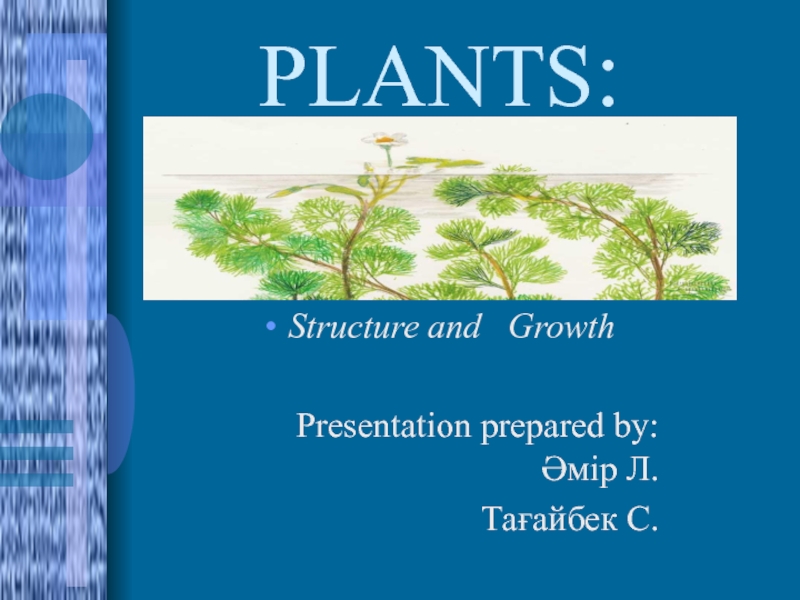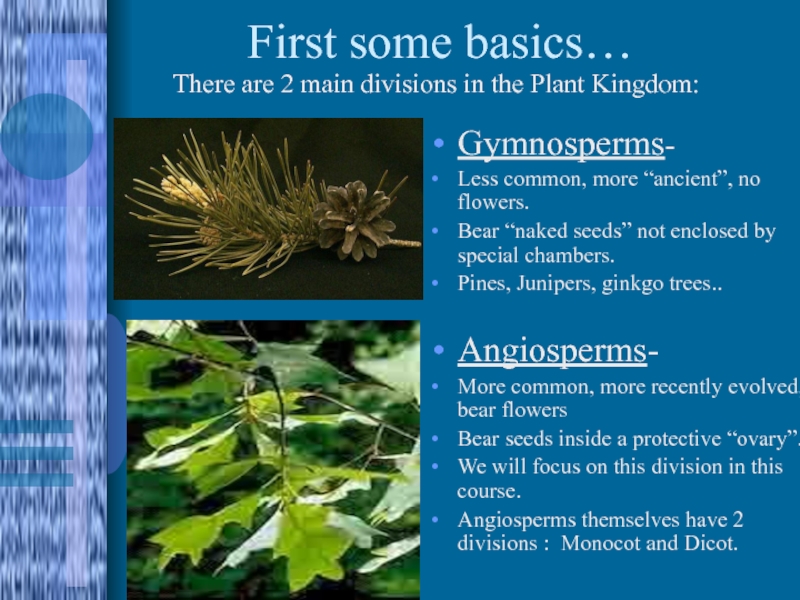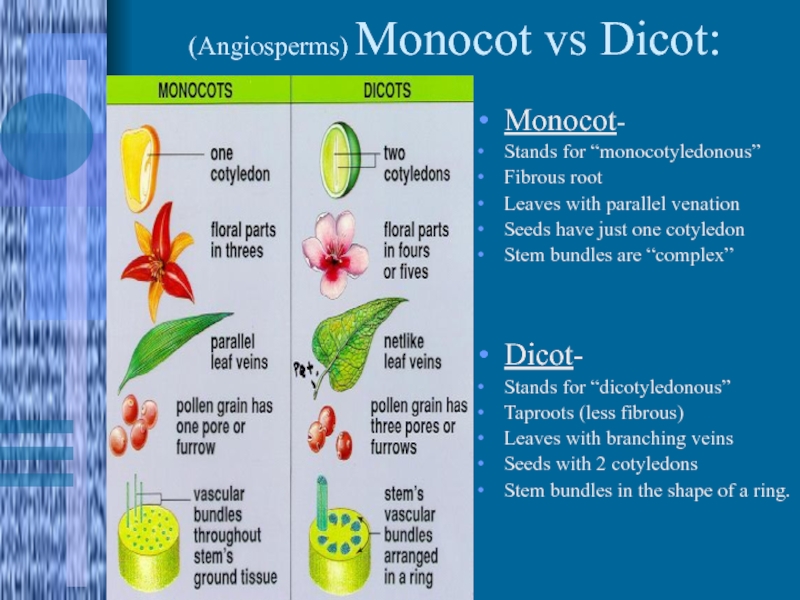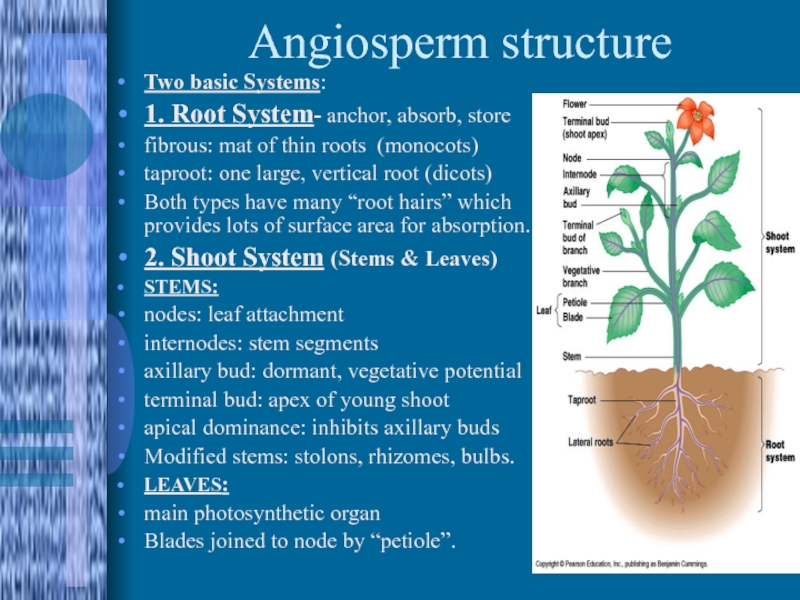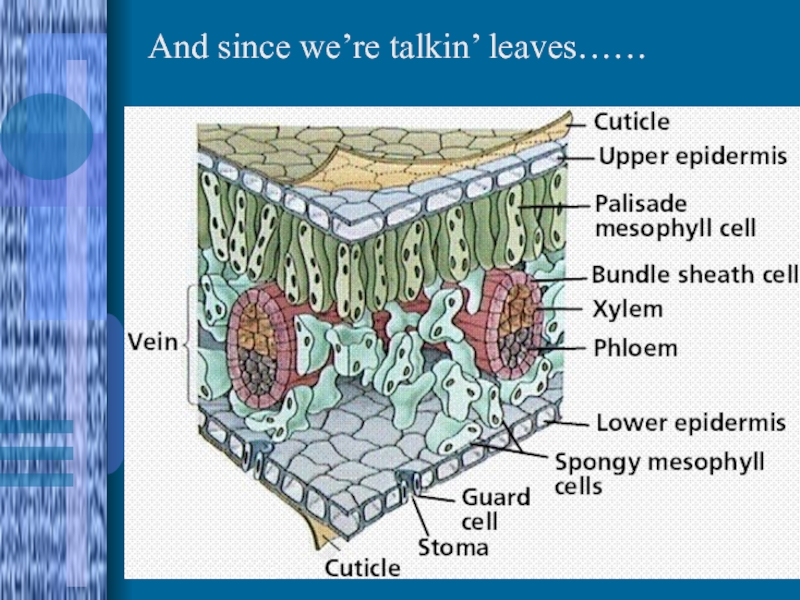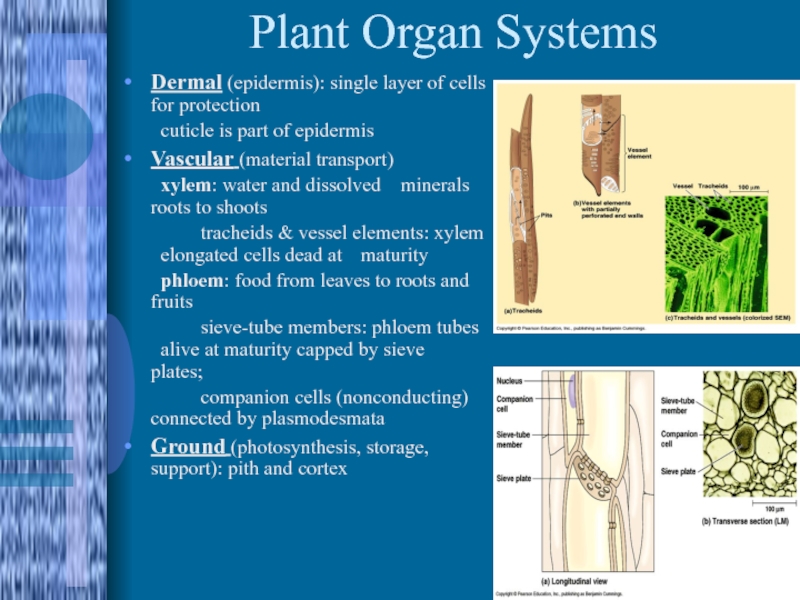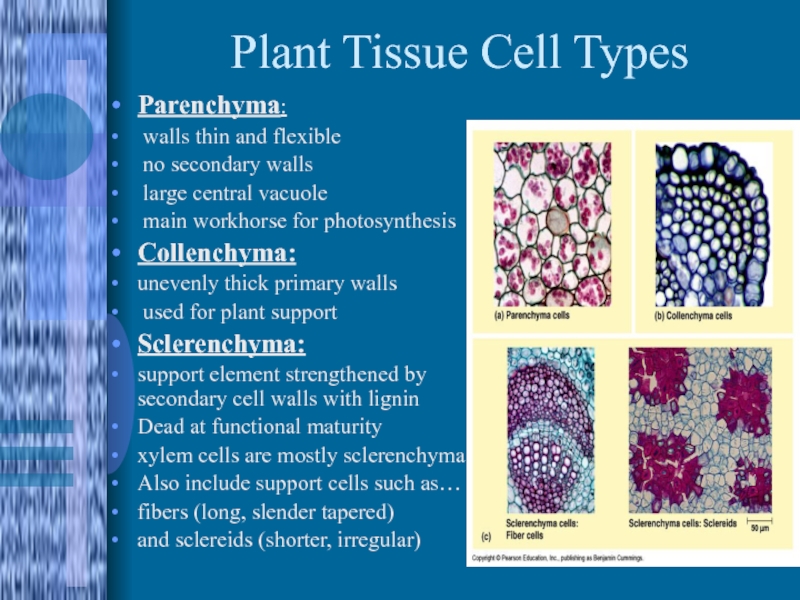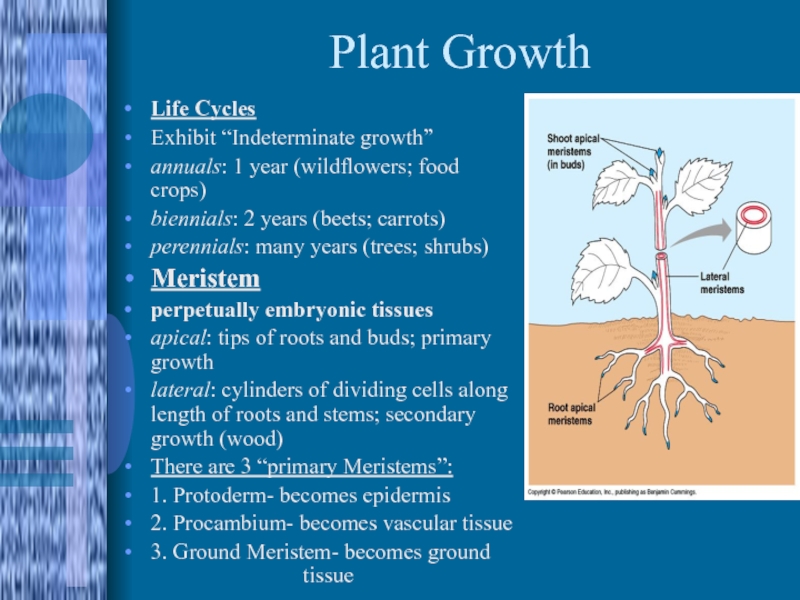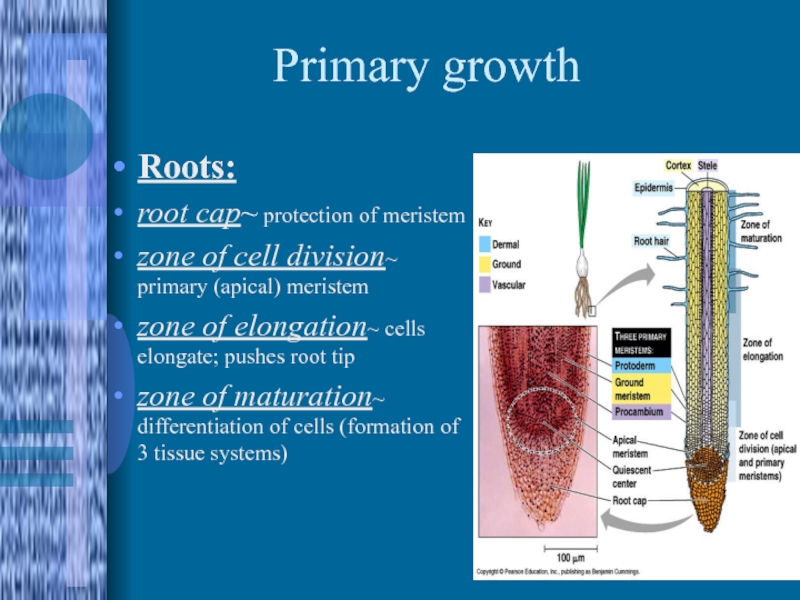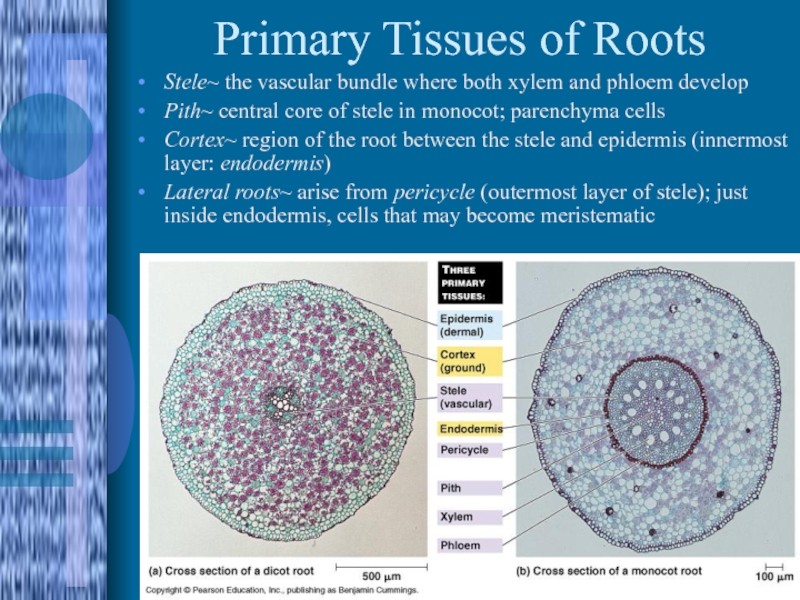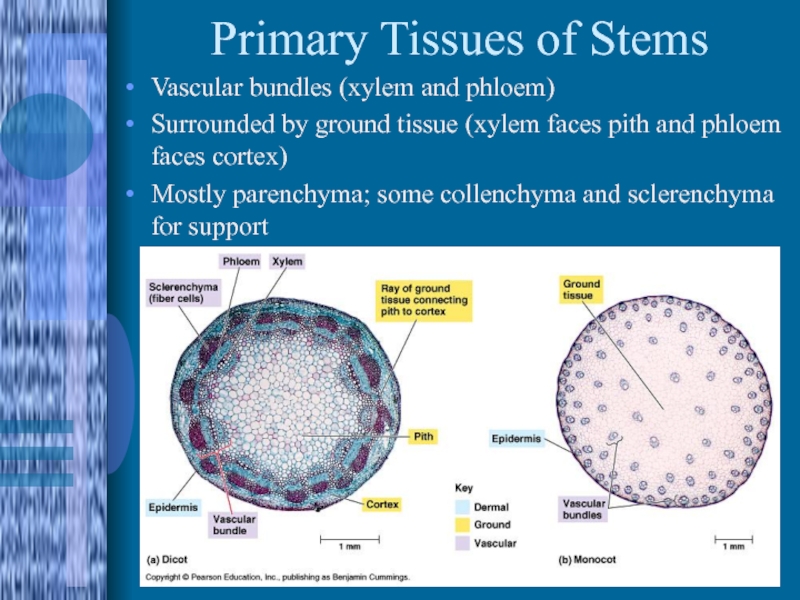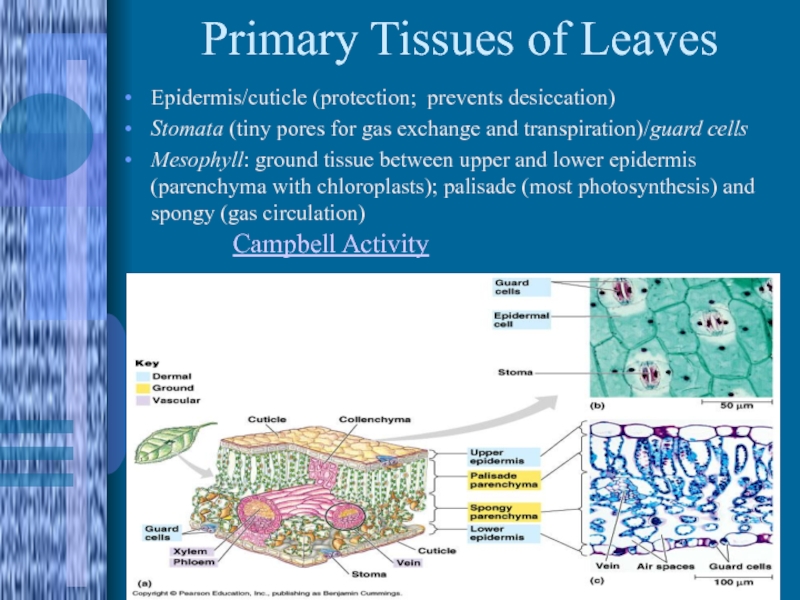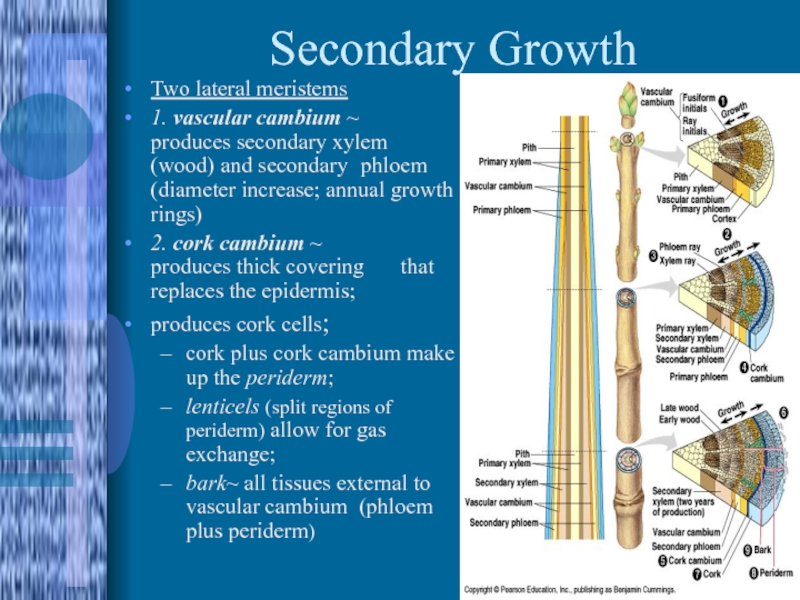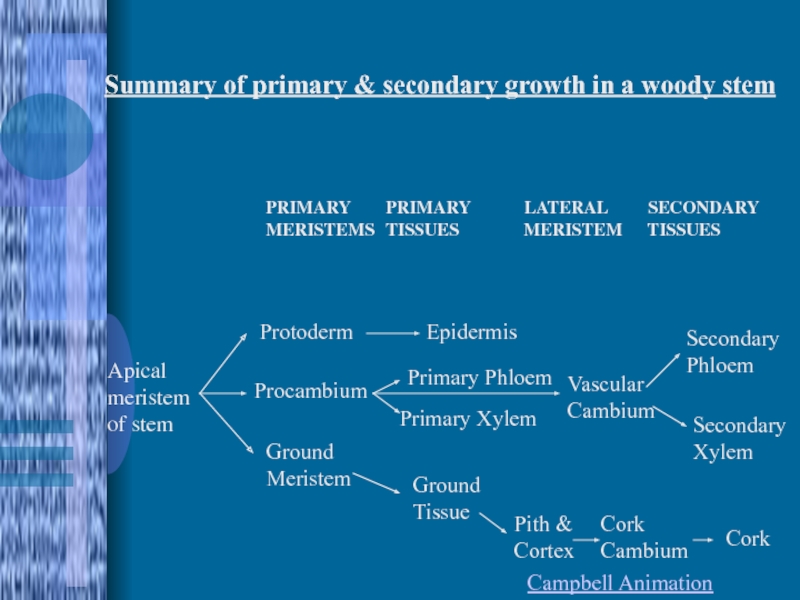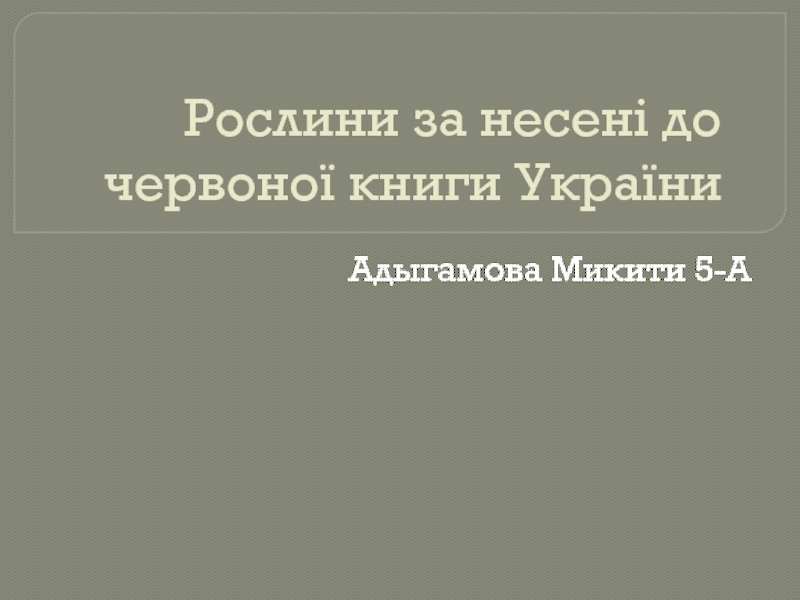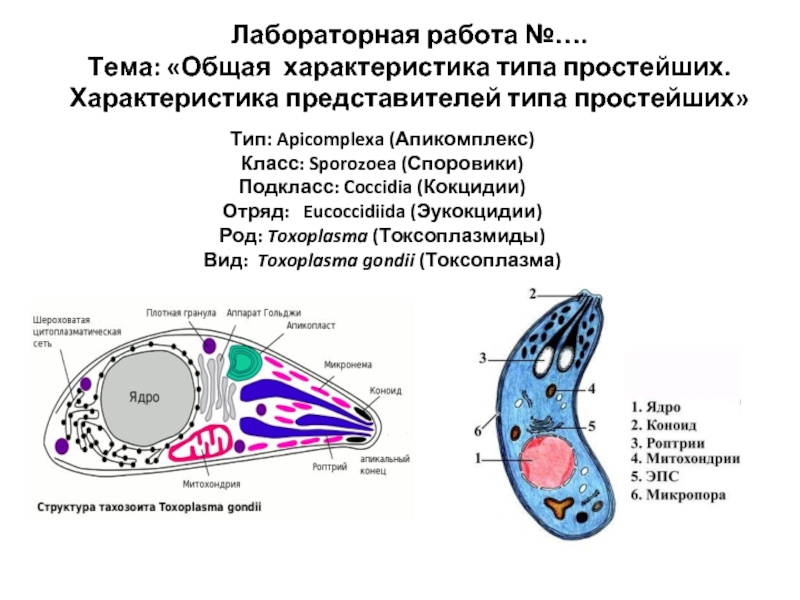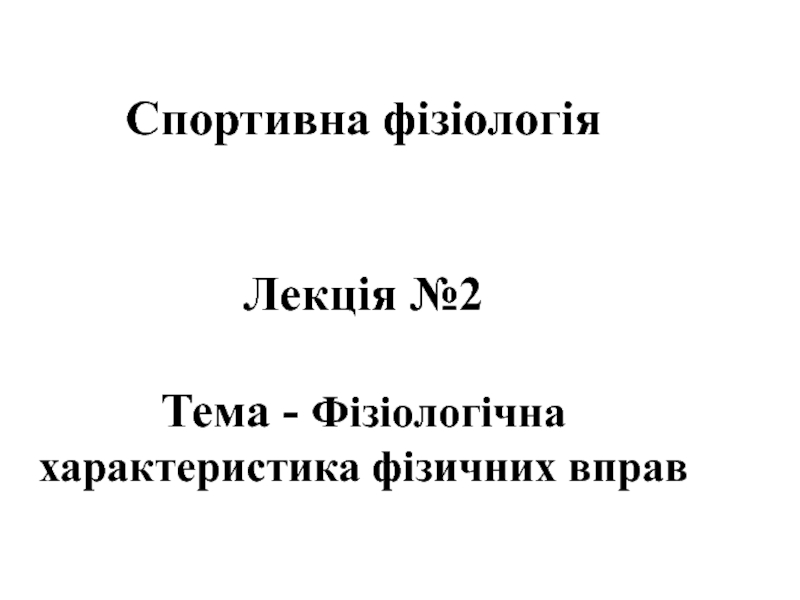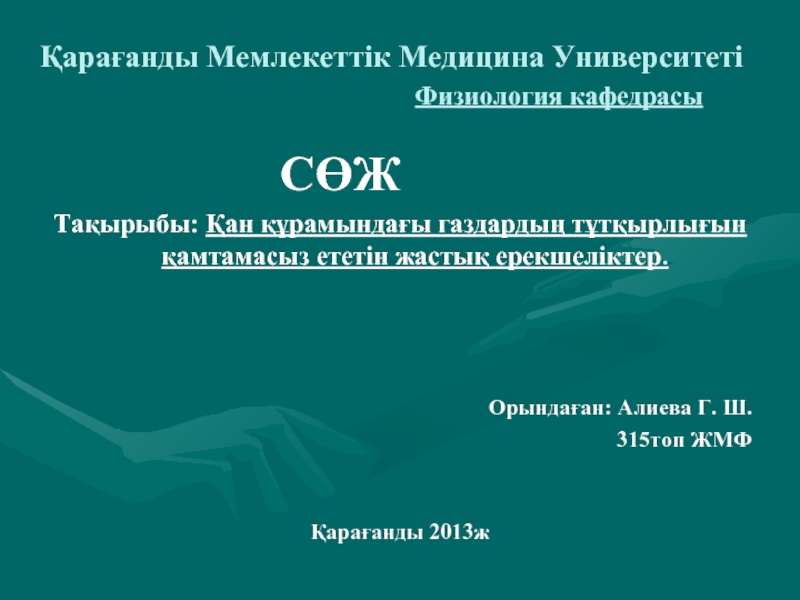- Главная
- Разное
- Дизайн
- Бизнес и предпринимательство
- Аналитика
- Образование
- Развлечения
- Красота и здоровье
- Финансы
- Государство
- Путешествия
- Спорт
- Недвижимость
- Армия
- Графика
- Культурология
- Еда и кулинария
- Лингвистика
- Английский язык
- Астрономия
- Алгебра
- Биология
- География
- Детские презентации
- Информатика
- История
- Литература
- Маркетинг
- Математика
- Медицина
- Менеджмент
- Музыка
- МХК
- Немецкий язык
- ОБЖ
- Обществознание
- Окружающий мир
- Педагогика
- Русский язык
- Технология
- Физика
- Философия
- Химия
- Шаблоны, картинки для презентаций
- Экология
- Экономика
- Юриспруденция
Structure and growth of plants презентация
Содержание
- 1. Structure and growth of plants
- 2. First some basics… Gymnosperms- Less common,
- 3. (Angiosperms) Monocot vs Dicot:
- 4. Angiosperm structure Two basic Systems: 1. Root
- 5. And since we’re talkin’ leaves……
- 6. Plant Organ Systems Dermal (epidermis): single layer
- 7. Plant Tissue Cell Types Parenchyma: walls
- 8. Plant Growth Life Cycles Exhibit “Indeterminate growth”
- 9. Primary growth Roots: root cap~ protection of
- 10. Primary Tissues of Roots Stele~ the vascular
- 11. Primary Tissues of Stems Vascular bundles (xylem
- 12. Primary Tissues of Leaves Epidermis/cuticle (protection; prevents
- 13. Secondary Growth Two lateral meristems 1. vascular
- 14. Summary of primary & secondary growth in
Слайд 2First some basics…
Gymnosperms-
Less common, more “ancient”, no flowers.
Bear “naked seeds”
Pines, Junipers, ginkgo trees..
Angiosperms-
More common, more recently evolved, bear flowers
Bear seeds inside a protective “ovary”.
We will focus on this division in this course.
Angiosperms themselves have 2 divisions : Monocot and Dicot.
There are 2 main divisions in the Plant Kingdom:
Слайд 3 (Angiosperms) Monocot vs Dicot:
Monocot-
Stands for “monocotyledonous”
Fibrous root
Leaves
Seeds have just one cotyledon
Stem bundles are “complex”
Dicot-
Stands for “dicotyledonous”
Taproots (less fibrous)
Leaves with branching veins
Seeds with 2 cotyledons
Stem bundles in the shape of a ring.
Слайд 4Angiosperm structure
Two basic Systems:
1. Root System- anchor, absorb, store
fibrous: mat of thin roots (monocots)
taproot: one large, vertical root (dicots)
Both types have many “root hairs” which provides lots of surface area for absorption.
2. Shoot System (Stems & Leaves)
STEMS:
nodes: leaf attachment
internodes: stem segments
axillary bud: dormant, vegetative potential
terminal bud: apex of young shoot
apical dominance: inhibits axillary buds
Modified stems: stolons, rhizomes, bulbs.
LEAVES:
main photosynthetic organ
Blades joined to node by “petiole”.
Слайд 6Plant Organ Systems
Dermal (epidermis): single layer of cells for protection
cuticle is
Vascular (material transport)
xylem: water and dissolved minerals roots to shoots
tracheids & vessel elements: xylem elongated cells dead at maturity
phloem: food from leaves to roots and fruits
sieve-tube members: phloem tubes alive at maturity capped by sieve plates;
companion cells (nonconducting) connected by plasmodesmata
Ground (photosynthesis, storage, support): pith and cortex
Слайд 7Plant Tissue Cell Types
Parenchyma:
walls thin and flexible
no secondary walls
main workhorse for photosynthesis
Collenchyma:
unevenly thick primary walls
used for plant support
Sclerenchyma:
support element strengthened by secondary cell walls with lignin
Dead at functional maturity
xylem cells are mostly sclerenchyma
Also include support cells such as…
fibers (long, slender tapered)
and sclereids (shorter, irregular)
Слайд 8Plant Growth
Life Cycles
Exhibit “Indeterminate growth”
annuals: 1 year (wildflowers; food crops)
biennials: 2
perennials: many years (trees; shrubs)
Meristem
perpetually embryonic tissues
apical: tips of roots and buds; primary growth
lateral: cylinders of dividing cells along length of roots and stems; secondary growth (wood)
There are 3 “primary Meristems”:
1. Protoderm- becomes epidermis
2. Procambium- becomes vascular tissue
3. Ground Meristem- becomes ground tissue
Слайд 9Primary growth
Roots:
root cap~ protection of meristem
zone of cell division~ primary (apical)
zone of elongation~ cells elongate; pushes root tip
zone of maturation~ differentiation of cells (formation of 3 tissue systems)
Слайд 10Primary Tissues of Roots
Stele~ the vascular bundle where both xylem and
Pith~ central core of stele in monocot; parenchyma cells
Cortex~ region of the root between the stele and epidermis (innermost layer: endodermis)
Lateral roots~ arise from pericycle (outermost layer of stele); just inside endodermis, cells that may become meristematic
Слайд 11Primary Tissues of Stems
Vascular bundles (xylem and phloem)
Surrounded by ground tissue
Mostly parenchyma; some collenchyma and sclerenchyma for support
Слайд 12Primary Tissues of Leaves
Epidermis/cuticle (protection; prevents desiccation)
Stomata (tiny pores for gas
Mesophyll: ground tissue between upper and lower epidermis (parenchyma with chloroplasts); palisade (most photosynthesis) and spongy (gas circulation)
Campbell Activity
Слайд 13Secondary Growth
Two lateral meristems
1. vascular cambium ~ produces secondary xylem
2. cork cambium ~ produces thick covering that replaces the epidermis;
produces cork cells;
cork plus cork cambium make up the periderm;
lenticels (split regions of periderm) allow for gas exchange;
bark~ all tissues external to vascular cambium (phloem plus periderm)
Слайд 14Summary of primary & secondary growth in a woody stem
Apical
meristem
of stem
PRIMARY
MERISTEMS TISSUES MERISTEM TISSUES
Protoderm
Procambium
Ground
Meristem
Epidermis
Primary Phloem
Primary Xylem
Vascular
Cambium
Secondary
Phloem
Secondary
Xylem
Ground
Tissue
Pith &
Cortex
Cork
Cambium
Cork
Campbell Animation
